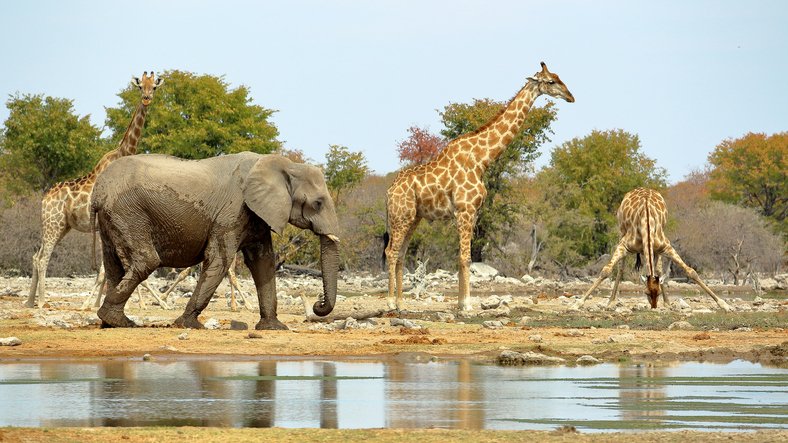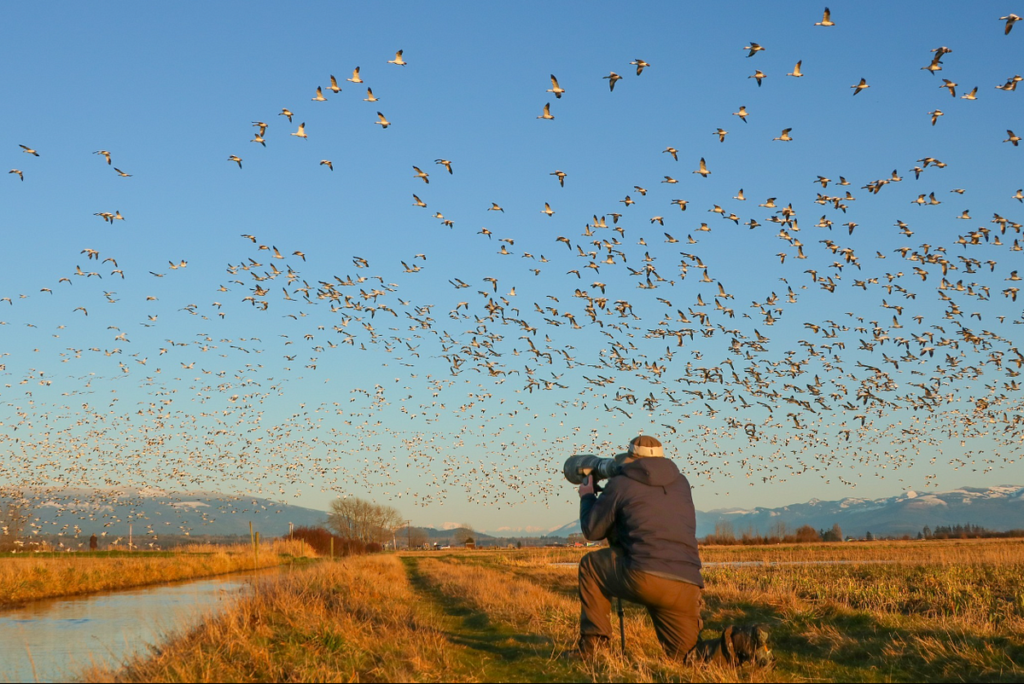Wildlife photography is a powerful way to capture the raw beauty and majesty of animals in their natural habitats. Among the most awe-inspiring subjects for photographers are elephants and giraffes. These gentle giants possess unique physical characteristics and behaviors that make them ideal subjects for a wildlife photographer. In this article, we will delve into the techniques and tips for capturing the grace of these magnificent animals, helping you take stunning photographs that truly reflect their elegance and power.
Understanding Elephants and Giraffes

1. The Grace of Elephants
Elephants are majestic creatures that exude strength, wisdom, and calmness. Despite their enormous size, they possess an elegance that can be captured beautifully through a camera lens. Their slow movements, family bonds, and expressive eyes provide endless opportunities for captivating photos.
- Key Features to Focus On:
- The wrinkles and texture of their skin
- Their large ears and tusks
- The trunk, which is often the most expressive feature
- Their interactions with other elephants, showcasing familial relationships
- The soft yet powerful gaze
2. The Grace of Giraffes
Giraffes, with their long necks and graceful strides, offer unique photographic opportunities. Their towering height allows them to interact with the environment in fascinating ways, such as reaching for leaves on tall trees or running across the savannah in elegant, loping motions.
- Key Features to Focus On:
- The height and silhouette of their long necks
- The patterns on their coats, which vary between individuals
- Their delicate movements as they walk or bend to feed
- The interaction between giraffes, especially during courtship or in family groups
Techniques for Capturing Elephants and Giraffes

1. Choosing the Right Gear
Having the right equipment is essential when photographing large animals like elephants and giraffes. These animals are often found in vast landscapes or dense brush, requiring specific gear to capture their essence.
- Camera Body: A DSLR or mirrorless camera with a high frame rate and large sensor will help you shoot in various lighting conditions, from bright daylight to dusk or dawn.
- Lens: A telephoto lens (200mm to 400mm) is essential for wildlife photography, allowing you to shoot from a safe distance without disturbing the animals. A wide-angle lens (16mm to 35mm) can also be used to capture expansive landscapes with animals in the frame.
- Tripod: A sturdy tripod is essential when using long lenses to avoid camera shake, especially for long-duration shots.
2. Mastering Camera Settings
To capture the grace of elephants and giraffes, you must master key camera settings:
- Shutter Speed: Elephants and giraffes tend to move slowly, but capturing them in motion requires a shutter speed of at least 1/500th of a second. For more still moments, a slower shutter speed can help create softer images.
- Aperture: A wide aperture (f/2.8 to f/5.6) will help blur the background and focus attention on the animal. However, for capturing groups of elephants or giraffes, a smaller aperture (f/8 to f/11) will ensure more of the scene is in focus.
- ISO: Keep your ISO as low as possible (ISO 100-400) to avoid noise, but be prepared to increase it in low-light situations, especially during early mornings or late evenings.
3. Composing Your Shot
Composition is key to creating impactful wildlife photographs. Here are some tips for composing shots of elephants and giraffes:
- Golden Hour Lighting: The best time to photograph wildlife is during the golden hour, either just after sunrise or just before sunset. The warm light enhances the natural beauty of these animals and softens harsh shadows.
- Rule of Thirds: Use the rule of thirds to position elephants or giraffes off-center, creating a more dynamic image. This is particularly effective when capturing the long neck of a giraffe or the vastness of an elephant in the landscape.
- Close-ups and Wide Shots: While close-up shots of elephant faces or giraffes eating can reveal intricate details, wide-angle shots that include the environment can provide context and emphasize the size and majesty of the animals.
4. Capturing Animal Behavior
Wildlife photography is not just about snapping pictures of animals but capturing their behavior and emotions. For both elephants and giraffes, pay attention to their interactions with the environment, other animals, and each other.
- Elephant Family Dynamics: Elephants have complex social structures. Capturing a herd interacting, with young calves playing or following their mothers, tells a powerful story of family and care.
- Giraffe Courtship: Giraffes often engage in interesting courtship behavior, with males competing for females. These moments can create dramatic shots full of energy and movement.
- Interactions with Nature: Capturing moments of elephants and giraffes interacting with their environment—whether it’s a giraffe grazing on leaves or an elephant bathing in a waterhole—adds authenticity to your photos.
Ethical Wildlife Photography Practices

Respecting wildlife is paramount in wildlife photography. When photographing elephants and giraffes, it’s important to ensure that your presence does not disturb or harm the animals.
- Respect Distance: Maintain a safe distance between you and the animals. Use your telephoto lens to get close-up shots without disturbing their natural behavior.
- Avoid Luring Animals: Never use food, calls, or other methods to attract animals. This can disrupt their natural behavior and can be harmful to their health.
- Minimize Environmental Impact: Stay on designated paths and avoid causing damage to the habitat or disturbing other animals.
Also Read : The Role Of Animal Nutrition In Enhancing Immune System Function
Conclusion
Capturing the grace of elephants and giraffes through wildlife photography requires patience, skill, and an understanding of these magnificent creatures. By focusing on the details of their behavior, physical features, and interactions with the environment, you can create stunning images that highlight their elegance and majesty. With the right gear, knowledge of animal behavior, and an ethical approach, your wildlife photography will truly reflect the beauty of the African wilderness.
FAQs
Q1: What is the best time of day to photograph elephants and giraffes?
A: The best time to photograph these animals is during the golden hours—shortly after sunrise and just before sunset. The soft, warm light enhances the beauty of the animals and their surroundings.
Q2: How do I get close enough to photograph elephants and giraffes without disturbing them?
A: Use a telephoto lens to capture detailed images from a safe distance. Always respect wildlife by not getting too close, and ensure you’re following local guidelines and regulations.
Q3: What is the most important aspect to focus on when photographing elephants?
A: Focus on capturing their emotional expression through their eyes, interactions within the herd, and the texture of their skin and tusks. These elements convey the strength and grace of the elephant.
Q4: How do I capture the movement of giraffes while they walk or run?
A: To capture the grace of a moving giraffe, use a faster shutter speed (at least 1/500th of a second) to freeze motion, or experiment with panning techniques for a more dynamic effect.
Q5: What gear do I need to photograph elephants and giraffes effectively?
A: A DSLR or mirrorless camera with a telephoto lens (200mm-400mm) is ideal. A tripod can also help stabilize your shots, especially with long lenses.





